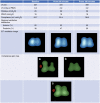To prone or not to prone ARDS patients on ECMO
- PMID: 34461971
- PMCID: PMC8405345
- DOI: 10.1186/s13054-021-03675-6
To prone or not to prone ARDS patients on ECMO
Erratum in
-
Correction: Selected articles from the annual update in Intensive Care and Emergency Medicine 2021.Crit Care. 2024 Apr 5;28(1):110. doi: 10.1186/s13054-024-04857-8. Crit Care. 2024. PMID: 38581042 Free PMC article. No abstract available.
Abstract
This article is one of ten reviews selected from the Annual Update in Intensive Care and Emergency Medicine 2021. Other selected articles can be found online at https://www.biomedcentral.com/collections/annualupdate2021 . Further information about the Annual Update in Intensive Care and Emergency Medicine is available from https://link.springer.com/bookseries/8901 .
© 2021. Roca et al.
Conflict of interest statement
OR discloses a research grant from Hamilton Medical; speaker fees from Hamilton Medical, Aerogen, Gilead, Fisher&Paykel and Ambu; non-financial research support from Timpel and Masimo Corporation. Other authors have no conflicts of interest to disclose.
Figures

References
-
- Gattinoni L, Taccone P, Carlesso E, Marini JJ. Prone position in acute respiratory distress syndrome. Rationale, indications, and limits. Am J Respir Crit Care Med. 2013;188:1286–93. - PubMed
-
- Mure M, Domino KB, Lindahl SG, Hlastala MP, Altemeier WA, Glenny RW. Regional ventilation- perfusion distribution is more uniform in the prone position. J Appl Physiol. 1985;2000(88):1076–1083. - PubMed
Publication types
MeSH terms
LinkOut - more resources
Full Text Sources

